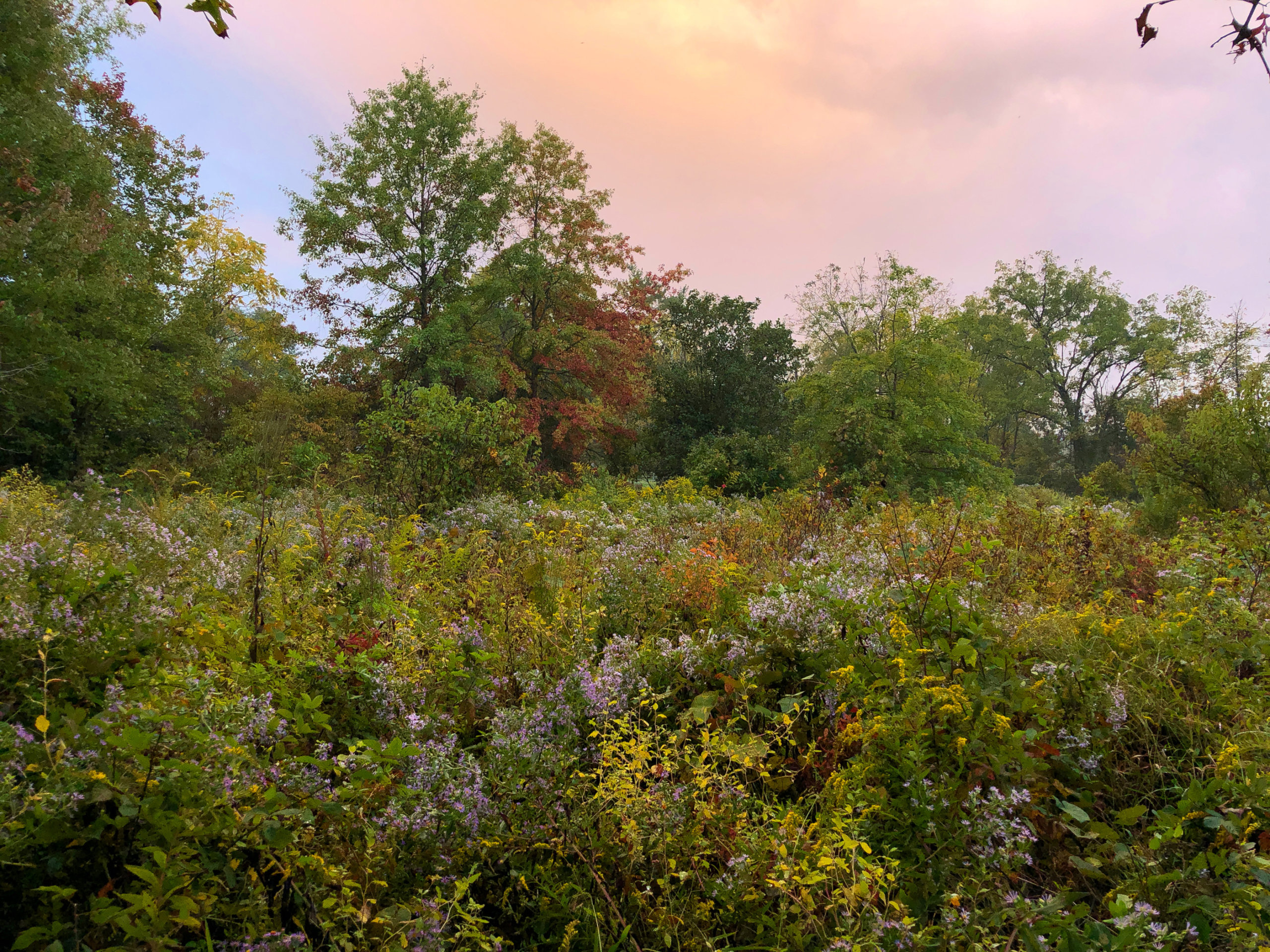Crow’s Nest: Asters and goldenrod and so much more
By Daniel Barringer, Preserve Manager.

Asters and goldenrod make a beautiful combination and this year the two together have been spectacular. I often say that nature is the best at landscape design and this combination illustrates this well.
If we’re going to talk about asters and goldenrod we need to open Robin Wall Kimmerer’s Braiding Sweetgrass (Milkweed Editions, 2013). She writes a chapter on this, describing her first meeting with a college advisor, wanting to know why these two flowers look so good together. He dismisses her question as “not science.”
The full title of the book is Braiding Sweetgrass: Indigenous Wisdom, Scientific Knowledge, and the Teachings of Plants. Robin Wall Kimmerer is a plant scientist, poet, member of the Potawatomi Nation, mother, and student of Native American stories and traditions. She is able to connect the dots for me in a way that has not happened before: she can explain the scientific basis for the traditional wisdom and practices of Native Americans.
While beauty may be in the eye of the beholder, she says, science also tells us that the two colors of purple asters and yellow goldenrod, having reciprocal colors in human and bee eyes and growing together, attract a greater number of pollinators than either would growing alone, therefore leading to better plant success. She adds, “It’s a testable hypothesis, it’s a question of science, a question of art, and a question of beauty” (46).
In other chapters she points out the value of a gift economy as practiced by Native Americans versus one of private property being a bundle of rights as we are more familiar in our current economy. The more something is shared, the more it gains value (think of how many more people benefit from land that is open to the public—our preserves, for example—than from posted private property). And if things are offered as gifts instead of purchased commodities, you exercise self-restraint in taking them—you take only what you need. Kimmerer quotes scholar Lewis Hyde:
A gift relationship with nature is a “formal give-and-take that acknowledges our participation in, and dependence upon, natural increase. We tend to respond to nature as a part of ourselves, not a stranger or alien available for exploitation.” (30)
The chapter on maple sugaring notes the joint effort in making the sweet food: the trees raise the sap, but our boiling it is our contribution—as is planting trees for future harvests.
A chapter on gratitude describes the Thanksgiving Address which begins every school day in the Onondaga sovereign territory near her home and is, Kimmerer says, a statement of identity and sovereignty, as well as a lesson in Native science. In articulating thanks for what nature offers, the oration articulates each element of the ecosystem and its function. It is therefore difficult to forget what we all depend on. More than that, she adds:
You can’t listen to the Thanksgiving Address without feeling wealthy. And, while expressing gratitude seems innocent enough, it is a revolutionary idea. In a consumer society, contentment is a radical proposition (111).
The chapters on black ash basketmaking and sweetgrass (Hierochloe odorata) are lessons on abundance, patience, and reciprocity. Both black ash and sweetgrass, though they appear to be growing in unmanaged natural areas, actually decline in places where people are not harvesting them. Robin Wall Kimmerer is able to mesh the scientific method of her graduate students with the Native wisdom: “If you use a plant respectfully it will flourish.” (159). The sweetgrass plots in which half the plants were either cut or pulled both grew better over time than the untouched control plots. The black ash and basket makers are similarly partners “…in a symbiosis between harvesters and harvested.” (149). Dependent on openings of sunlight, black ash thrives best near communities of basket makers.
I take away an understanding that the bounty that Europeans who arrived here was not “nature’s bounty” but an artifact of careful management. I knew this before—but didn’t understand specifically by what techniques this is the case.
Braiding Sweetgrass goes on to explain the scientific understanding and Native wisdom of many other natural phenomena and stewardship methods. She expresses outrage over the destructive practices of our industrial era, but the book is also a guide to living an accountable personal life.
A couple more notes: I particularly enjoyed listening to the audiobook version of Braiding Sweetgrass, read by the author. I often favor books read by their authors, as they know best what they want to say. And Robin Wall Kimmerer has the most lovely of voices, soothing and relaxing even when describing technical information and addressing difficult subjects.
If you want to hear more I recommend a 2016 radio interview with Robin Wall Kimmerer with Krista Tippett on the show “On Being”: https://onbeing.org/programs/robin-wall-kimmerer-the-intelligence-of-plants/
Robin Wall Kimmerer will also be a keynote speaker at the PASA Sustainable Agriculture conference, to be held virtually in January and February 2021: https://pasafarming.org/conference/.
